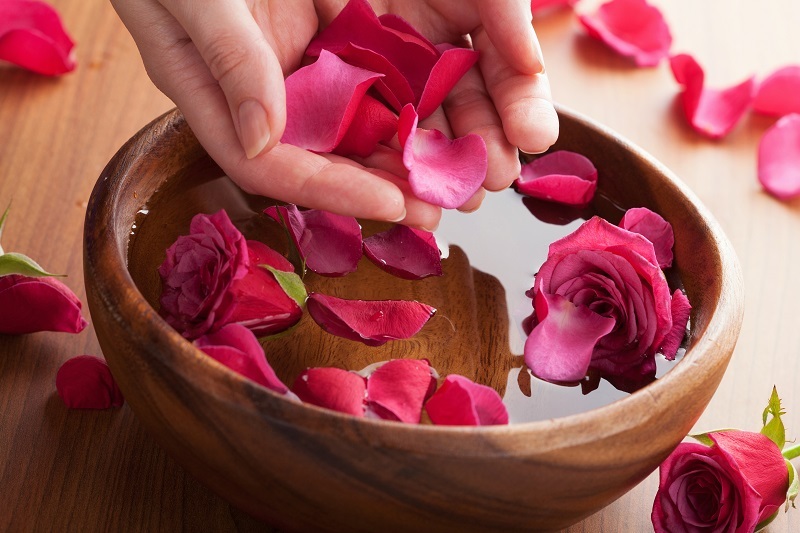8 Startling Sunflower Facts You Need to Learn Today
Posted on 14/08/2025
8 Startling Sunflower Facts You Need to Learn Today
When you think of sunflowers, a bright and cheerful field of golden yellow blooms may come to mind. However, the sunflower is much more than an eye-catching plant; it's a botanical marvel packed with intriguing stories and surprising science. Whether you're a home gardener, a nature enthusiast, or simply curious about the wonders of the plant world, these eight stunning sunflower facts will leave you amazed. Explore their fascinating history, ecology, and impact on our daily lives right here!
1. Sunflowers Track the Sun--But Not Always
The term "sunflower" itself stems from their unique trait known as heliotropism. Young sunflower plants exhibit a fascinating behavior--during the budding phase, their heads follow the sun's movement from east to west each day. This motion maximizes light absorption and boosts their growth rate.
- Scientific studies have shown that the young plant's internal circadian rhythm is responsible for this daily dance.
- However, once sunflowers reach maturity and blossom fully, they "lock" facing east.
This eastward orientation not only promotes early morning pollinator visits by warming up faster under the sun but also protects the seeds from the midday heat.

2. Sunflowers Are Native to North America
While widely associated with picturesque European landscapes today, sunflowers actually originate from North America. Archeological records indicate that Native Americans began domesticating sunflowers as early as 3,000 BC in what is now the United States and Mexico.
Used by Indigenous People
- Sunflower seeds were a valuable food source (eaten raw, roasted, or ground into flour).
- Sunflower oil was extracted for cooking purposes and medicinal remedies.
- The bright petals and sturdy stems were used for fabric dyes, weaving, and even in ceremonial practices.
It wasn't until the 16th century that Spanish explorers carried sunflower seeds back to Europe, where their popularity soared.
3. A Single Sunflower Can Hold Over 2,000 Seeds
Have you ever marveled at the tightly-packed spiral patterns in a sunflower's center? These complex designs are not just visually pleasing--they're a mathematical wonder! Based on the Fibonacci sequence, these spirals allow a sunflower head to pack in as many seeds as possible without wasted space.
- The average sunflower produces between 1,000 and 2,000 seeds!
- Under optimal growing conditions, some giant varieties can even hold up to 3,000 seeds.
- These seeds are harvested both as a nutritious snack and as a vital ingredient in sunflower oil production.
Sunflower heads are not a single flower but a composite: each "petal" is a tiny flower, and each seed develops from its own floret.
4. The Tallest Sunflower Ever Grown Was Over 30 Feet!
Just how tall can sunflowers grow? While average garden sunflowers (Helianthus annuus) typically reach between 6 and 10 feet, certain cultivars can soar much higher.
World Record Sunflowers
- The Guinness World Record for the tallest sunflower goes to Hans-Peter Schiffer from Germany, whose plant reached a jaw-dropping 30 feet 1 inch (9.17 meters) in 2014!
- With care, optimal soil, and proper support, giant sunflowers are capable of growing as fast as 12 inches (30 cm) in a single day.
Next time you plant sunflower seeds, imagine one sprouting taller than a two-story house!
5. Sunflowers Can Help Clean Toxic Soil
Among sunflower facts that astonish scientists and environmentalists alike is their power to remediate polluted soil. Sunflowers are classified as phyto-remediators, meaning they can absorb toxins through their roots.
- Sunflowers were planted near Chernobyl and Fukushima after nuclear disasters to help remove heavy metals and radioactive isotopes from the soil.
- Experiments show that sunflowers can extract lead, arsenic, and even uranium--making them nature's cleanup crew!
- This "green technology" offers a low-cost and beautiful method for restoring contaminated landscapes.
Who knew that the unassuming sunflower could play such a vital environmental role?
6. There Are Over 70 Species of Sunflowers
Most people are familiar with the classic big-headed, yellow-flowered annual sunflower (Helianthus annuus), but the sunflower family is impressively diverse. The genus Helianthus contains over 70 species, encompassing perennials and annuals, wild and cultivated varieties.
- Some species display stunning reddish-orange, white, or even purple-tinted flowers.
- Wild sunflowers often have smaller, multi-branched heads, while cultivated types produce the iconic single, giant bloom.
- Miniature ornamental sunflowers can bloom in pots, and branching sunflowers are favorites in floral arrangements.
Each species attracts a diversity of pollinators and wildlife, enriching our gardens, farms, and ecosystems.
7. Sunflowers Are Rich in Nutrients and Health Benefits
One of the most practical sunflower fun facts is that sunflower seeds aren't just tasty--they're healthy! Sunflower seeds are jam-packed with protein, healthy fats, vitamins, minerals, and antioxidants.
- They provide vitamin E--a potent antioxidant that defends your cells from damage.
- Sunflower seeds offer magnesium, selenium, copper, and B vitamins crucial for heart, brain, immune, and bone health.
- High in healthy fats, most notably linoleic acid, sunflower oil also supports cardiovascular health.
From roasted snacks to crunchy salad toppings and smooth sunflower butter, these seeds are a nutritious addition to any diet.
8. Sunflowers Have Inspired Art, Culture, and Science
The symbolism and visual beauty of sunflowers have captivated humanity for centuries. Artists, scientists, and writers have drawn inspiration from these golden blooms, infusing sunflower imagery into art, literature, and scientific research.
Sunflowers in Art and History
- Perhaps the most famous sunflower paintings were created by Vincent van Gogh in the late 1800s, immortalizing sunflowers as a symbol of joy and friendship.
- Native American cultures assigned spiritual meaning to sunflowers, associating them with the sun, bounty, and harvest celebrations.
- Botanists and mathematicians study the arrangement of seeds--called phyllotaxis--which connects directly to the Golden Ratio and Fibonacci numbers.
Sunflowers represent optimism, loyalty, and the natural perfection of mathematical patterns--no wonder they're beloved worldwide!
Bonus Fun Facts About Sunflowers
- The world's largest sunflower head had a diameter of 32 1/4 inches (82 cm)!
- Sunflower "petals" are actually called ray florets and aren't true petals at all.
- Sunflowers can purify water by absorbing pollutants through their roots in a process called rhizofiltration.
- Sunflower oil is the fourth most-consumed vegetable oil in the world.
- Giant sunflower mazes are popular tourist attractions each summer, symbolizing adventure and happiness.

How to Grow Sunflowers at Home
If these astonishing sunflower facts have inspired you to try growing your own, you're in luck--sunflowers are easy and rewarding to cultivate:
- Choose a spot with full sun
--sunflowers need at least 6-8 hours daily. - Plant seeds directly in the ground after the last spring frost (or start indoors for a head start).
- Space seeds 6-12 inches apart, depending on variety, and keep soil moist until sprouting.
- Support tall sunflowers with stakes to prevent wind damage.
- Fertilize occasionally, but avoid high-nitrogen formulas which spur foliage over flowers.
Within weeks, you'll witness the incredible growth and beauty of these iconic flowers for yourself!
Conclusion: Startling Sunflower Secrets Unveiled
From sun-tracking behaviors to earth-healing abilities, and from nutritional powerhouse to cultural icon, the humble sunflower proves itself a plant worth celebrating. Next time you pass a field full of sunny faces, remember these startling sunflower facts and appreciate all the ways this golden bloom shapes our world.
Discover the wonder of sunflowers--plant a seed, feed a bird, or simply admire their dazzling display, and you'll be part of a story millions of years in the making!
Latest Posts
Stress-Free Office Environments with Hardy Plant Selections
Learn How to Nurture Poinsettias for Extended Longevity
Expert Tips for Vibrant Hydrangea Blooms
Bring Positive Energy into Your Life with the Essence of Flowers





